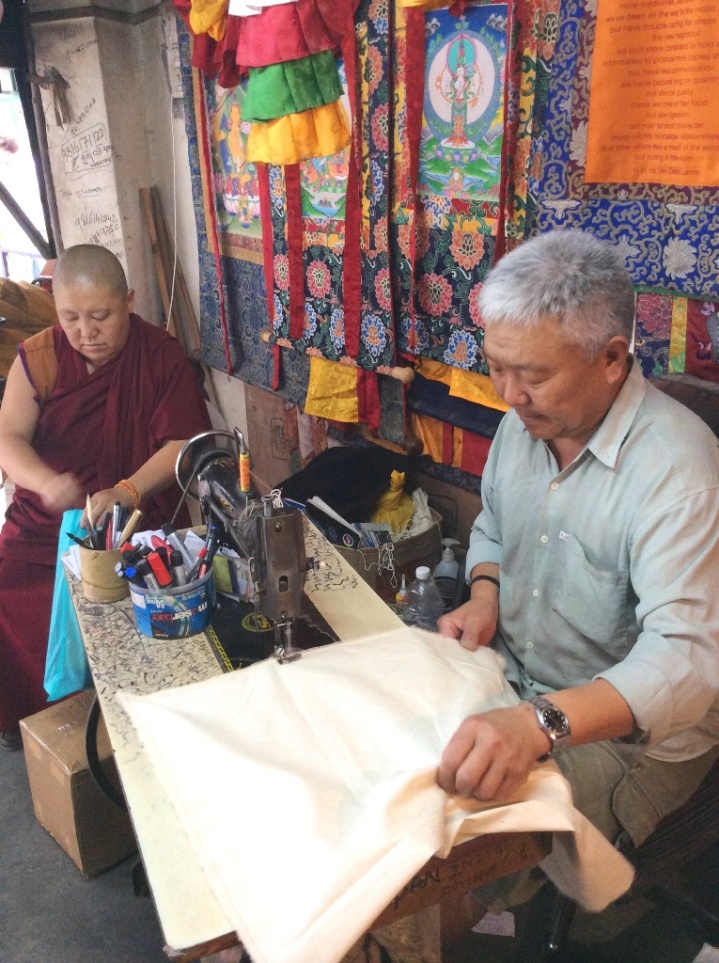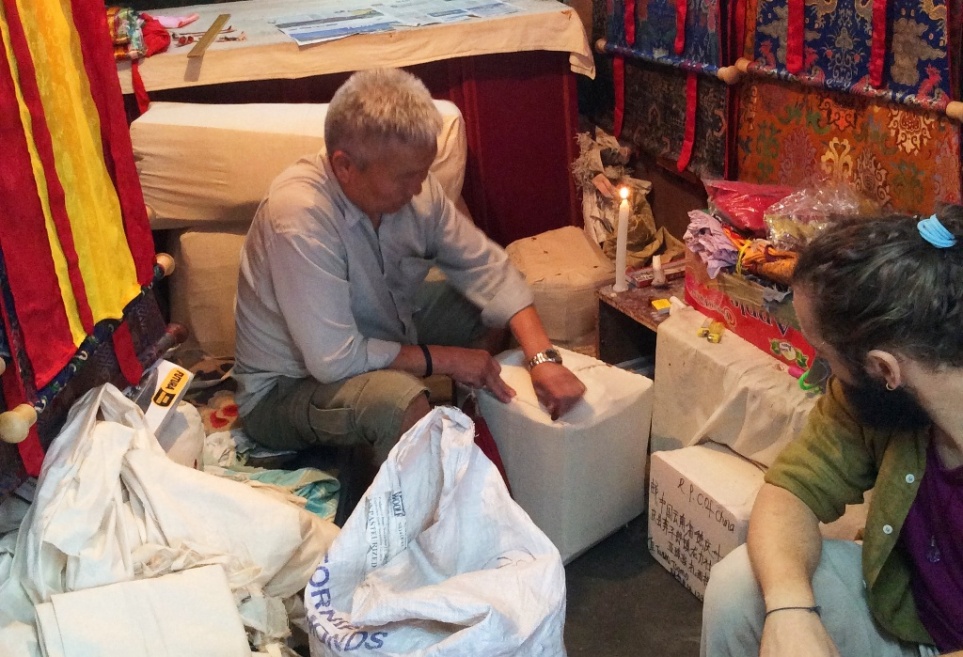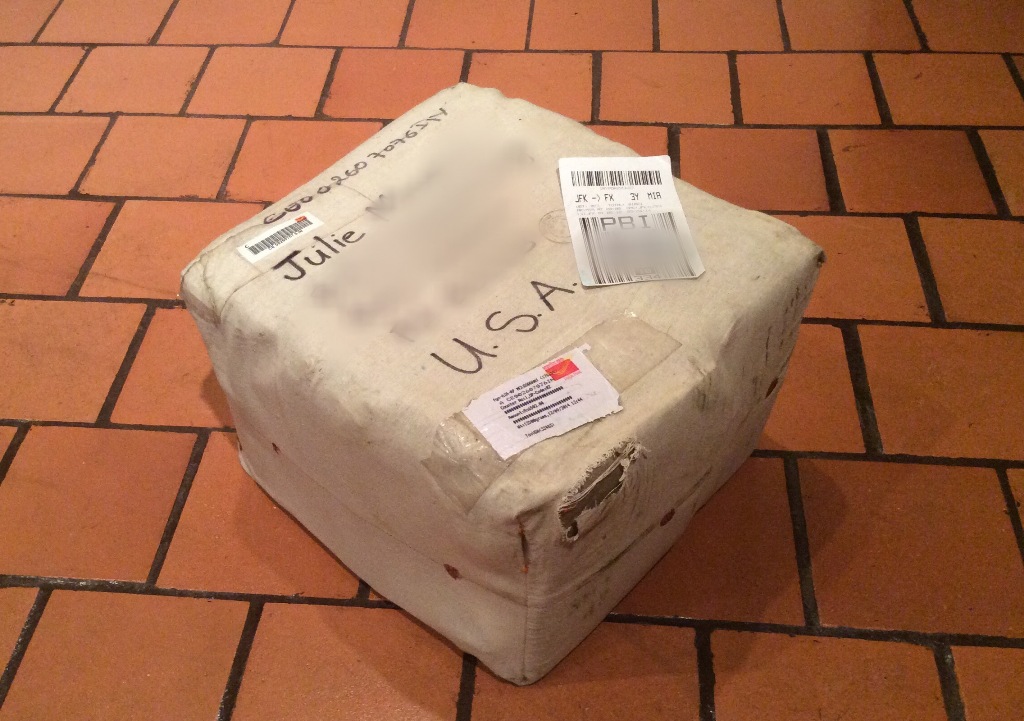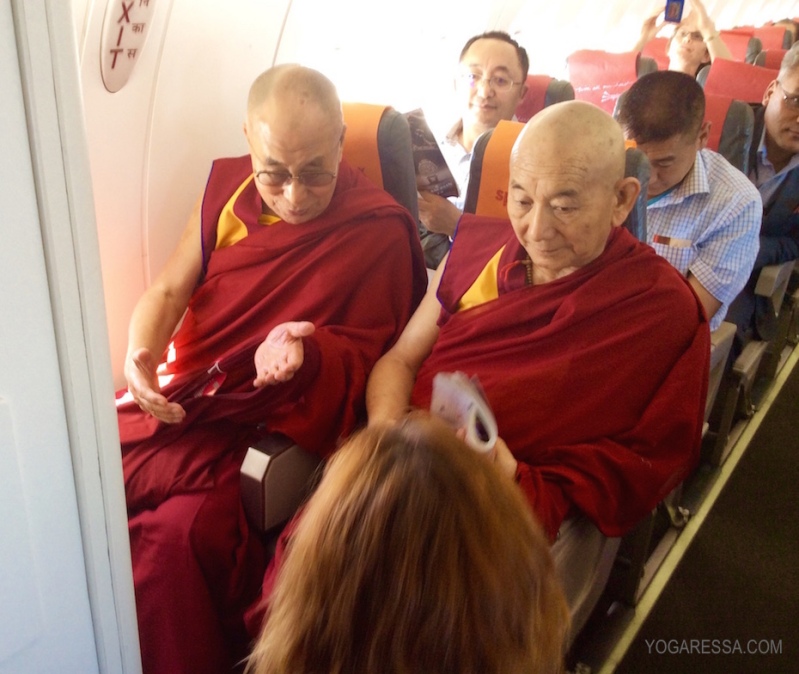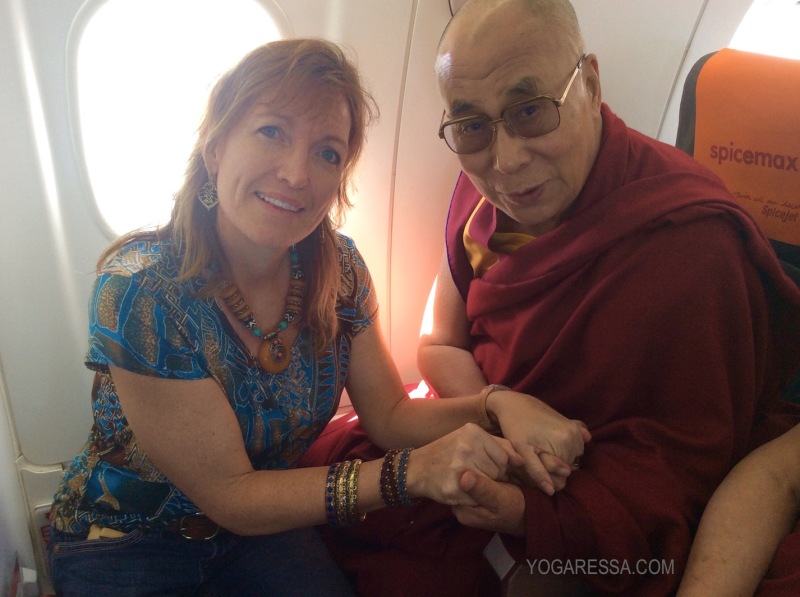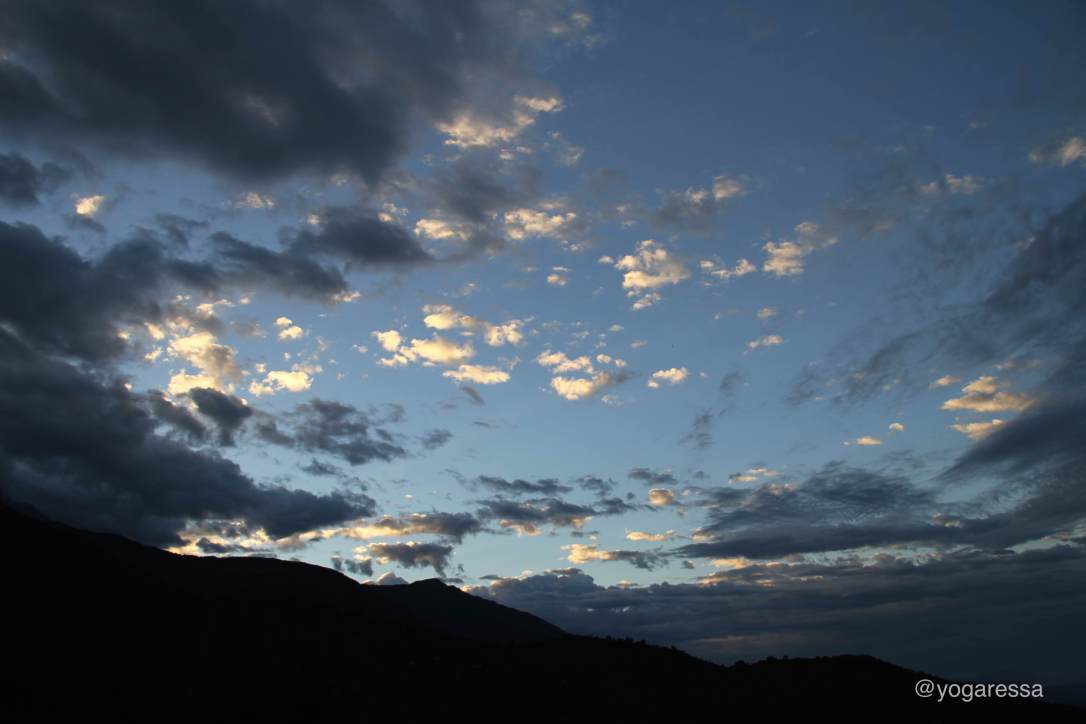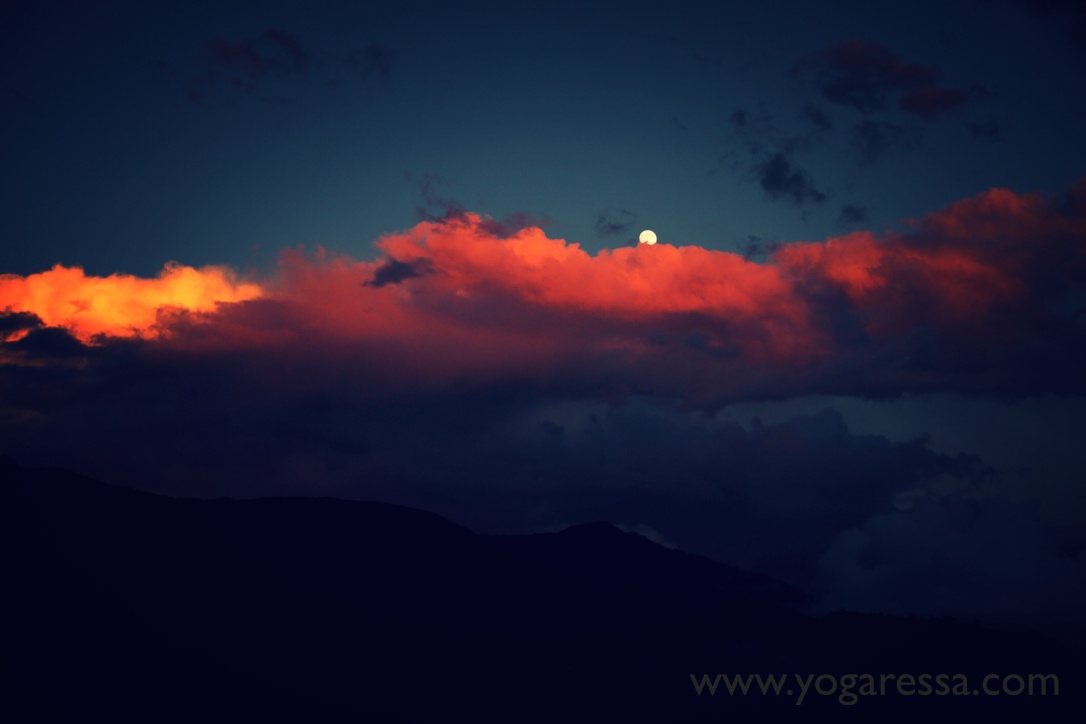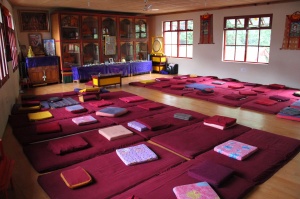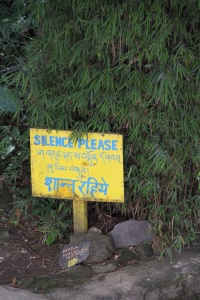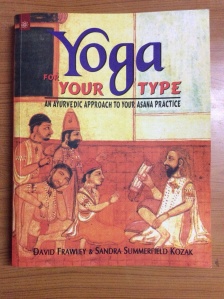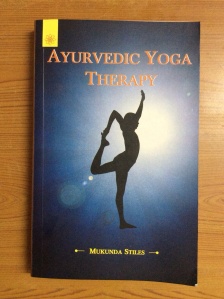MOVE …

I’ve been condensing two months of extensive yoga studies in India into 5 key areas, to simplify maintaining this healthy lifestyle, back home. Part 1 and Part 2 covered the Poop and Pray part, and now we add Move.
Surprise, surprise … in India, yoga is not typically an exercise you come to perform on your mat three times a week – it’s a way of life; more than just a workout.
Asanas (the physical yoga postures) are not yoga. They are a part of yoga. Here’s a perfect analogy, from our teacher, Yogi Sivadas: “It’s like touching a thorn on a rosebud and thinking that is all that a rose is – you’ll say ‘rose is prickly’ and you’ll miss out on smelling the perfume, because the flower hasn’t blossomed yet. If you only do asana, you won’t find the hidden beauty of yoga, which is inner peace.” The true beauty of yoga is hidden beyond the asanas. The asanas are a way of purifying the body and when the flower unfolds, we experience the hidden beauty within. A sort of yoga perspective on “Stop and smell the roses”.
 Of course, we were on a yoga teacher training program, so we were smelling the roses AND we were touching the thorns; we were doing asanas.
Of course, we were on a yoga teacher training program, so we were smelling the roses AND we were touching the thorns; we were doing asanas.
Every day.
Twice a day.
Four hours a day.
Here’s the difference. We didn’t approach our asanas with the kind of fervid and fanatical drive that we so often see in yoga. Yogi Sivadas’ constant message was, “slow down, take your time, feel your breath, always be mindful about what your body needs, rest when you need to”. We listened, and ironically, our bodies became stronger and more flexible through a path of ease and mindfulness, as opposed to a grim determination to muscle our way through countless vinyasas and pretzel poses.
“Yoga pose is a steady and comfortable position. Yoga pose is mastered by relaxation of effort, lessening the tendency for restless breathing, and promoting an identification of oneself as living within the infinite breath of life.” – The Yoga Sutra of Patanjali
Patanjali reminds us that calm and measured breathing is a critical part of healthy yoga movement, even when we are doing challenging poses. In fact, especially when we are doing challenging poses. That’s the barometer for whether we are overdoing it. Throughout our yoga asanas, we keep connecting again and again to the breath; breathing fully and allowing a smooth and even breath to feed the body and calm the mind.
We also learnt it’s not necessary to hold a pose at its maximum, for as long as possible. I’m not a physiotherapist nor a physiology nerd, but if the muscles fatigue to the point where they’re no longer doing a good job of holding the pose, we can end up stressing the joints (NOT good!) And if we then lock the joints to maintain a pose on behalf of fatigued muscles, we’re not engaging and strengthening the muscles – instead we can end up compressing the joints (NOT good!) Finally, when we’re straining and forcing the pose, the muscles become tighter, instead of stretched. The tighter they become, and the more we push into the stretch? Perfect combination for injuries to happen (yes, here it comes again … NOT good!)
 I’ve been practicing a less zealous form of yoga for years (often being encouraged to do more, hold it longer, “work to your edge”) and yet I’ve still suffered injury in the hamstring attachments and I’ve overstretched ligaments at the back of my knees. Even when I felt I wasn’t overdoing it. Are you a knee hyperextender? Don’t know? See this excellent article from Julie Gudmestad and find out.
I’ve been practicing a less zealous form of yoga for years (often being encouraged to do more, hold it longer, “work to your edge”) and yet I’ve still suffered injury in the hamstring attachments and I’ve overstretched ligaments at the back of my knees. Even when I felt I wasn’t overdoing it. Are you a knee hyperextender? Don’t know? See this excellent article from Julie Gudmestad and find out.
I love my asana practice. It makes me feel alive, it calms my mind, it connects me to my breath. After my time in India, my asana practice is both strong AND therapeutic, a place of even more ease. I’m being kinder to my joints, I’m aware of my heartbeat and breathing, and any time I feel the need to do MORE, I pause and ask myself if what I am already doing is enough, and can I still feel the relaxation in the effort?
And when the answer is yes, I know am in that perfect place to experience the unfolding of the rose flower and inhale the heady scent of yoga.
Next up: Part 4 of Poop, Pray, Move … what else do you think is fundamental to a healthy yoga lifestyle?

 since we often find ourselves anticipating what’s meant to happen, and what makes “A Good Meditation”. Did you see swirling colors and vivid imagery of eagles and panthers? Did a powerful voice boom out at you, sharing the secrets of the Universe, echoing in the cavern of your mind?
since we often find ourselves anticipating what’s meant to happen, and what makes “A Good Meditation”. Did you see swirling colors and vivid imagery of eagles and panthers? Did a powerful voice boom out at you, sharing the secrets of the Universe, echoing in the cavern of your mind?


